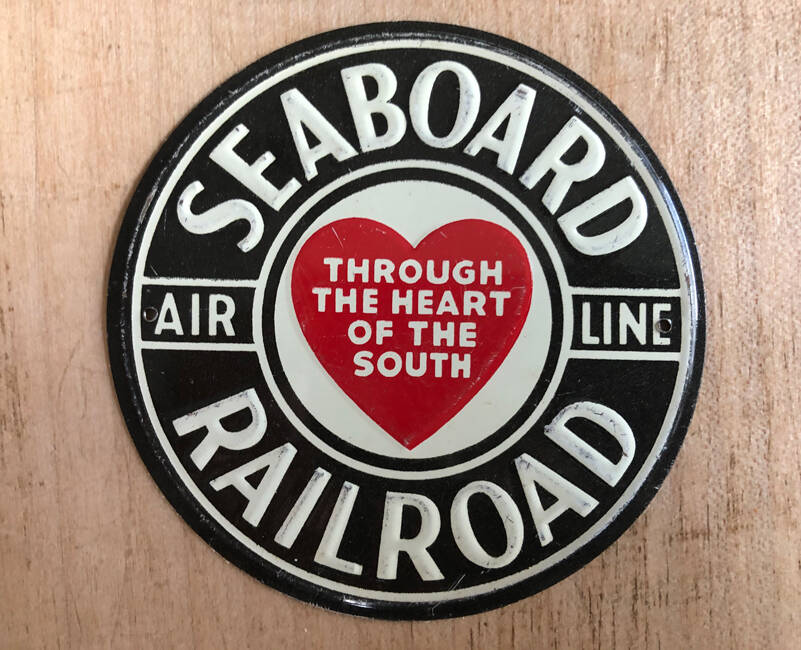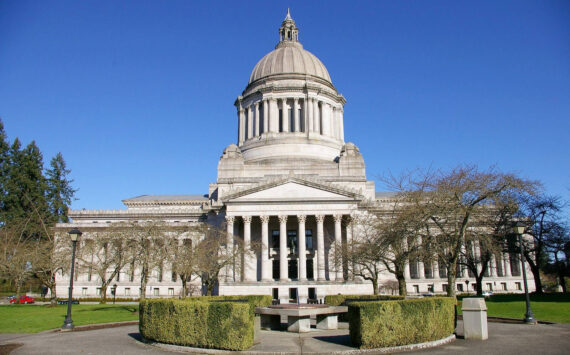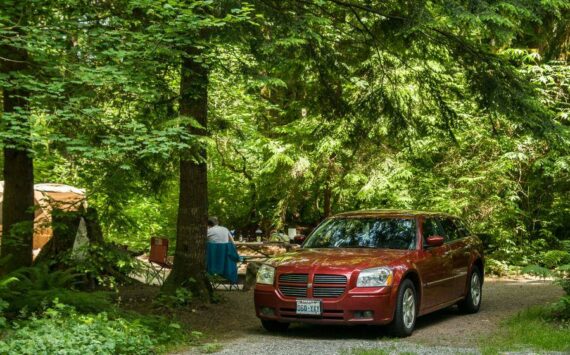By Morf Morford
Tacoma Daily Index
You may have heard some of this before, but, no matter how it makes it through our political and budgetary processes, this proposal could easily change how we get around. Could you picture a one hour rail trip to Portland for example? Why not? Other nations and cities have had high speed rail for years – even decades.
Brooklynn Hillemann from the WNPA News Service writes that a $16 billion plan, crafted mainly by Democrats, to fund hybrid-electric ferries, high speed rail, and improved highway maintenance has passed in the Senate and moved to the House.
“‘Move Ahead Washington’ is a promise to put Washingtonians first,” Rep. Jake Fey, D-Tacoma, chairman of the House Transportation Committee, said. “It’s future-oriented while still dealing with the realities people face today. It reflects what people told us they wanted to see in this package.”
Here’s some of the fine print; transit programs would get $3.1 billion, including $150 million set aside for high-speed rail. Another $3 billion would go toward highway preservation and maintenance. $1.3 billion would be spent on four new hybrid electric ferries and electrifying two existing ships. Fey said the priorities of the package include preserving infrastructure, finishing existing projects and addressing climate change.
The package would also provide funding to ensure those 18 and younger can ride for free on public transportation. $1.2 billion would go toward promoting walking and bicycling to school through infrastructure improvements and bike and pedestrian safety programs.
“Making buses, ferries and trains free for our kids will help create a multimodal future for our state,” Chairman of the Senate Transportation Committee Sen. Marko Liias, D-Everett, said.
How do we pay for it?
A large part of the plan’s funding, $5.5 billion, would stem from a carbon pricing program signed into law last year under the Climate Commitment Act. This program, taking effect in 2023, requires the state’s largest greenhouse gas emitters, such as refineries, to purchase credits for emissions if they exceed a cap set by regulators.
President Biden’s Federal Infrastructure Investment and Jobs Act would provide another $3.4 billion in revenue, with an additional $2 billion coming from the state operating budget.
“We are ensuring that we take resources we already have available, as well as some modest fees and other resources that don’t impact our struggling-working families and invest it to make life better for all of us,” Liias said.
About $2 billion would come from a new 6-cent-per-gallon tax on fuel exported to states with lower gas tax rates than Washington, such as Oregon, Alaska and Idaho. Liias said other states with refineries, including Florida, Texas and Tennessee, have implemented similar taxes.
We are paying for what we have
The system we have is costing us far more than dollars. Our freeway is a hazard and an expense – from pollution generated to time wasted to lives lost, our current system is a continual drain on our economy – and an exponential jump in our stress levels.
What’s wrong with what we have?
If you have had the (mis)fortune of a recent experience on I-5 you know the answer to that question.
From Tacoma, going north or south is an adventure few of us would take lightly.
And don’t expect anything to improve- in fact with up to 4 million more people expected to call the Northwest (mostly the Puget Sound area) home by 2050, our growing pains will only worsen if we don’t act – now.
The typical daily commuter in our region can spend 78 hours stuck in traffic — that’s more than three days of their time each year, according to the 2019 Urban Mobility Report by Texas A&M University’s Transportation Institute.
The optimal high-speed system would connect Vancouver, B.C., Seattle and Portland (and more) with an integrated transportation network that provides safe, efficient, reliable and affordable travel.
As it is now, depending on traffic slow downs, a trip between Seattle and Portland can take nearly four hours by car. A flight takes at least three hours with boarding and security. By high-speed rail, or other emerging high-speed technology, the trip would reliably take one hour at speeds of up to 250 miles per hour.
And yes, we’ve seen this play out before
More than fifty years ago, the King County Forward Thrust proposal to build a 47-mile, 30-station rapid rail system was supported by a majority of voters but failed to meet the 60% initiative threshold.
As a result, our region lost $1 billion of federal transportation funding. You can see what could have been our high-speed rail system in action in Atlanta, Georgia.
In exchange, we got a mid-20th Century transportation system for a digital age.
To put it simply, it’s not working.
From pollution generated to time wasted to lives lost, there is no excuse for us to not have a clean, fast and efficient system.
And yes, to put it mildly a project of this scale would generate jobs – about 200,000 skilled labor jobs in the Pacific Northwest, according to a 2017 state Department of Transportation study.
In addition to direct jobs for construction, operations and maintenance, economic development will bring employment opportunities in other sectors. For every direct job related to the ultra-high-speed line, four jobs will be supported in other industries, creating opportunities for more than 840,000 people.
A recent editorial (https://www.thenewstribune.com/opinion/article258073903.html) by U.S. Rep. (and former Tacoma mayor) Marilyn Strickland makes essentially this same point. She, with colleagues in Congress, including Senator Maria Cantwell, Representatives Rick Larsen, Derek Kilmer, Suzan DelBene and Chairman Peter DeFazio, helped ensure the federal government stepped up and funded passenger rail.
The Bipartisan Infrastructure Law contains $66 billion for passenger rail, including $12 billion for intercity passenger rail projects like the Cascadia Ultra-High-Speed Ground Transportation Project. The photo with the article was a stock photo of a high speed rail system. It could have been taken anywhere.
Anywhere except here of course.
We have a rail transport system from the 1970s when other nations like Italy, Sweden, Spain and China (among many others) have had high speed rail for years. The first high-speed rail system (AKA bullet-train) was built in Japan – in 1964!
China has the most miles of high-speed rail – way over 15,000 miles.
In a listing of nations with the most high-speed rail, the USA is not on the top five. Or ten.
Turkey is number ten. Turkey!
I’ve been on the Shanghai–Hangzhou high-speed railway. It is 126 miles long and travels at over 200 MPH. It is so smooth that you have to look out a window to see if you are moving. It is fast, cheap, clean and safe. And popular.
When I was on it, I couldn’t help asking myself a simple question; where’s ours?
The WNPA News Service can be found at: https://www.wastatejournal.org.





